
views
Basics
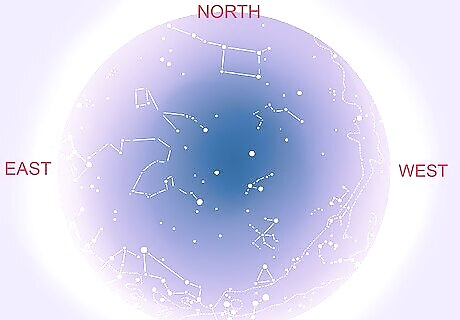
Be aware that there are sky charts or maps that indicate the location of each constellation. For the purposes of map-making, the celestial sphere is divided into six sections consisting of the northern and southern polar regions and four equatorial areas. These refer to the locations where you can view the sky section. If you're keen on seeing a certain constellation but you don't live where you can see it, you'll need to plan a grand expedition! (For example, stars that can be seen in the far northern latitudes cannot be seen in the far southern latitudes, and vice versa, because they do not rise above the horizon.) Some constellations, such as Orion, can be seen across most of the inhabited world. Sky maps look flat to us but that is so that they can fit inside a flat book. In reality, the sky is like a dome.

Note that there are 88 officially recognized constellations. Most amateur astronomers tend to look for those constellations that have notable features or recognizable star patterns. What you will be able to see when looking in a particular constellation not only depends on your geographic location but also on your equipment and local light pollution. Stars with a magnitude 6.5 and greater can usually be seen with the naked eye or with standard binoculars. You can also look for star clusters, nebulae, differently colored stars and galaxies. Many constellations have been known for thousands of years. In the time of ancient Greece, 48 constellations were noted by Ptolemy, a Greek astronomer.
The North Polar Sky
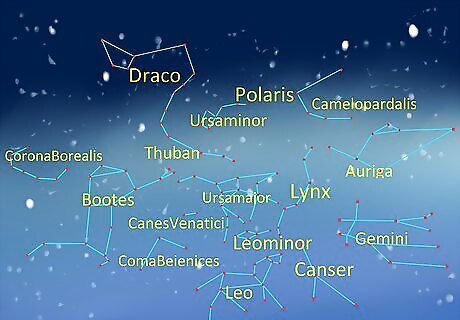
From here, look for the following constellations: Ursa Minor Ursa Major Draco Cygnus Bootes Canes Venatici Camelopardalis Lynx Cepheus Cassiopeia Andromeda Perseus Auriga Lacerta Delphinus
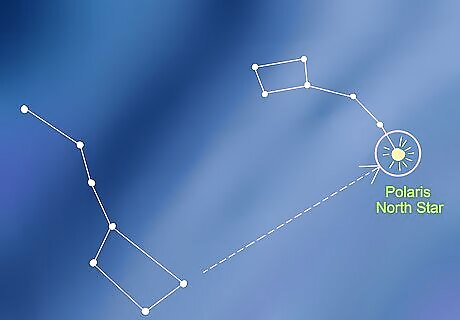
Look for Polaris. This is also known as the Pole Star or the North Star. Owing to the fact that Earth's axis is aligned to a point near this star, it appears to us that this star stays in the same spot. This has been useful for navigators throughout history.
Equatorial Sky Chart Three
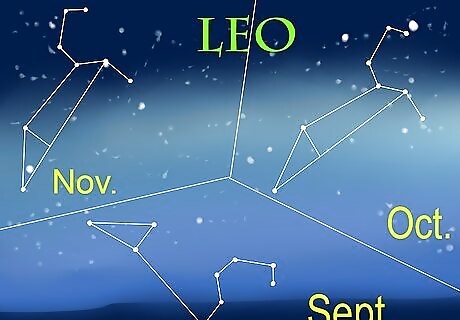
View the constellations for this sky chart during March, April and May. Look for the following constellations from this chart: Ursa Major Canes Venatici Coma Bernices Leo Minor Lynx Boötes Virgo Crater Corvus Libra Centaurus Lupus Hydra Antlia Vela Pyxis Sextans Leo.
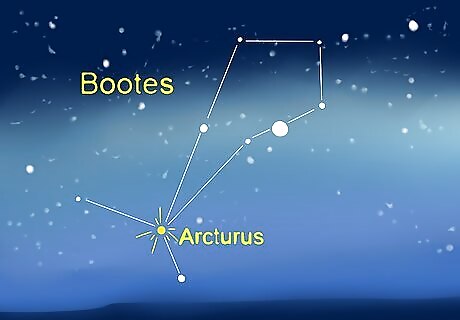
Look for stars. In Boötes, you'll find Arcturus, which has a red coloring and is very bright. In the Virgo constellation, you'll find Spica, which has a blue color. Leo is probably the most well known constellation.
Equatorial Sky Chart Four
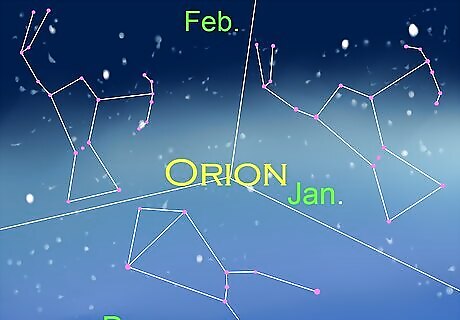
View the constellations for this sky chart during December, January and February. Look for the following constellations from this chart: Auriga Lynx Orion Perseus Eridanus Fornax Columba Lepus Canis Major Puppis Hydra Pyxis Taurus Cetus Gemini Monoceros Canis Minor Cancer Aries Horologium Caelum Pictor.
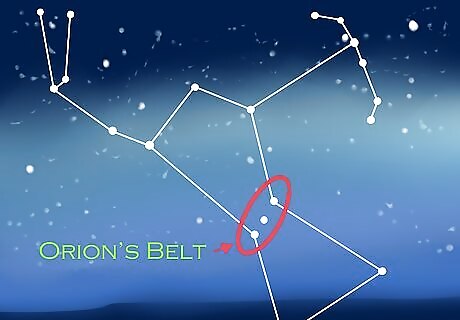
Look for the bright stars. This part of the night sky contains a lot of the bright stars, making it a good place to look, especially if you're just learning to spot the constellations. In particular, look for the Orion constellation, which contains a line of three very bright stars that form "Orion's belt". Other bright stars include Aldebaran in the Taurus constellation and the Pleiades (the Seven Sisters), known as the M45 star cluster. The Canis Major constellation has Sirius (the Dog Star), which is the brightest star in our night sky.




















Comments
0 comment